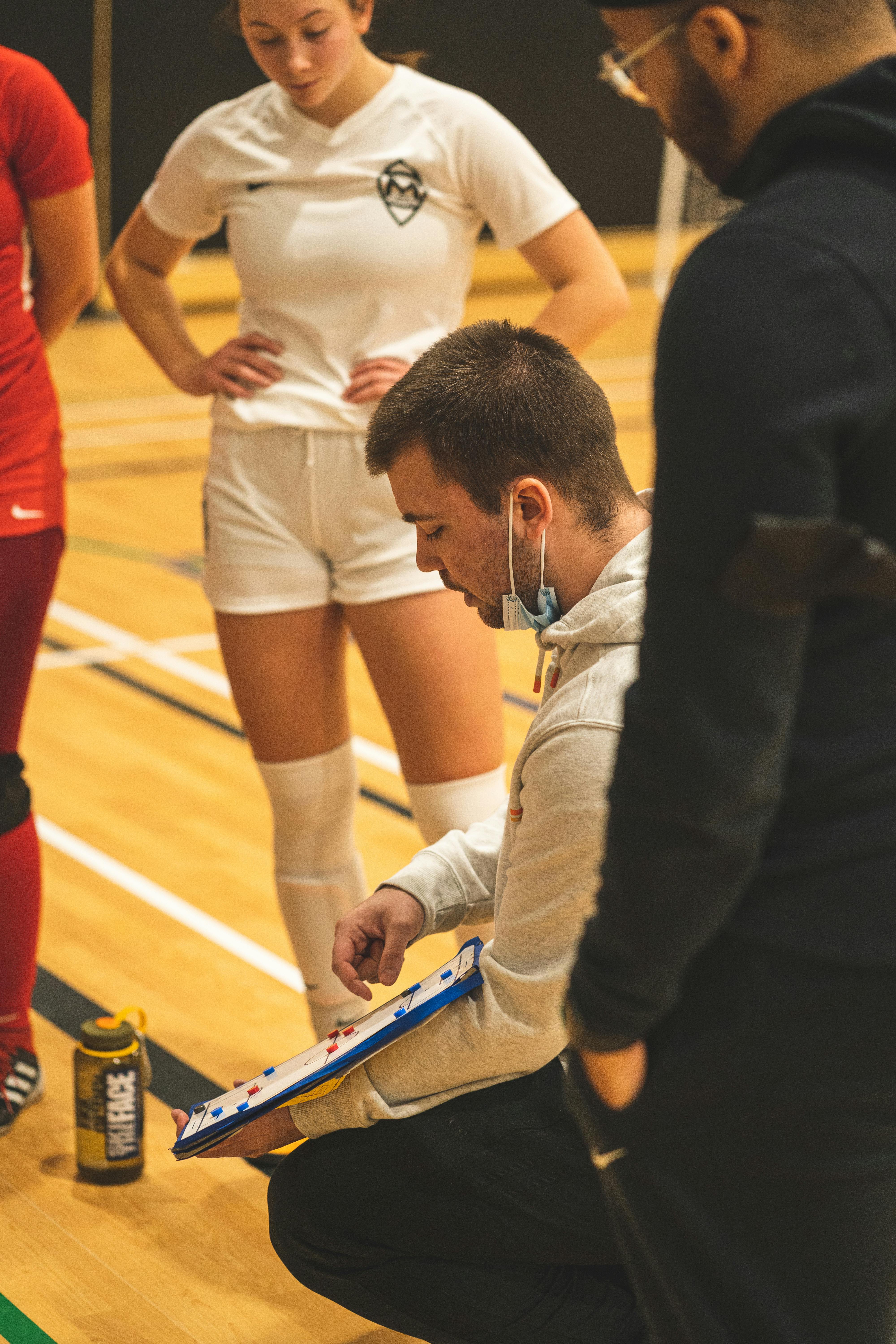Essential Guide to Creating a Fitness Studio Training Plan PDF for 2025
As we continue to prioritize health and wellness in our lives, creating an effective training plan for a fitness studio becomes crucial for fitness enthusiasts and gym owners alike. A well-structured trainingsplan fitnessstudio can help members achieve their fitnessziele, whether that’s improving krafttraining or enhancing ausdauertraining. This guide outlines essential elements to consider while designing a fitnessprogramm tailored to the needs of diverse individuals, ensuring maximum engagement and results.
In this guide, we will cover the following key aspects:
- The significance of a structured training plan
- Components of an effective workout routine
- Best practices for integrating fitnessgeräte and trainingsmethoden
- Tips for staying motivated within a gym community
- Guidelines for nutrition with an ernährungsplan
- Utilizing technology for efficient trainingseffizienz
By the end of this article, readers will have comprehensive insights on optimizing their training environments, fostering community interactions, and achieving lasting results through fitness.

Key Components of a Fitness Studio Training Plan
Building upon the importance of a structured training plan, let’s explore the essential components that make it effective. A well-designed trainingsplan not only includes a variety of gym übungen but also considers individual fitness levels, preferences, and goals. Here are critical elements to incorporate:
Understanding Fitness Goals
Setting clear and realistic fitnessziele is fundamental. Goals can range from fettabbau to increasing strength or endurance. Utilize the SMART criteria—Specific, Measurable, Achievable, Relevant, and Time-bound—to create objectives that are both motivating and attainable.
Workout Routine Structure
The structure of a workout routine typically involves balancing different training modalities, such as krafttraining and ausdauertraining. Incorporating a mix of exercises ensures comprehensive development and prevents workout monotony. Aim for a blend of cardio, resistance, and flexibility training to cater to all fitness components.
Integrating Variety with Training Methods
Different trainingsmethoden engage different muscle groups and keep workouts exciting. For instance, consider employing powerlifting techniques alongside functional movement patterns. This not only enhances performance but also prevents injuries caused by repetitive routines.
Utilizing Fitness Devices and Technology
Incorporating fitnesstracker and apps can significantly improve the trainingseffizienz. Tracking metrics helps trainers and members analyze progress, adjust plans accordingly, and stay motivated. Encourage the adoption of digital tools to enhance personal accountability within the gym.
Building on these components, the next step is developing a fitnessprogramm that can adapt to varying needs.
Designing an Effective Fitness Program
With foundational components set in place, we need to delve into how to create an effective fitnessprogramm tailored to individual needs in a fitness studio environment. A tailored approach can boost personal enjoyment and drive results.
Personalized Training Plans
Every individual has unique requirements and fitnessziele. A personal trainer skilled in creating personalized training plans can assess each member’s capabilities and design customized workouts that adapt to their progress. Regular trainingsanpassung ensures members remain challenged and engaged.
Supplementing with Nutritional Guidance
An equally important element is an accompanying ernährungsplan. Educating members about sports nutrition can significantly impact their results. Discuss macronutrient needs and meal timing around workouts for optimal muskelaufbau and recovery.
Incorporating Group Fitness Classes
Group fitness classes offer a dynamic environment that fosters community and accountability. Classes that integrate intensiv training and incorporate various fitness levels can lead to greater member satisfaction and retention. Think about options such as HIIT, yoga, and cycling.
Refining Training for Special Goals
For members with specific goals, such as wettkampftraining or rehabilitation, having specialized programs available is essential. Trainers should continuously evaluate trainingsfortschritt to ensure safe and effective training paths.
With a well-designed fitnessprogramm in hand, the focus shifts to motivating members to stay dedicated to their fitness journey.
Motivating Members Within the Gym Community
Fitness motivation plays a crucial role in sustained gym attendance and adherence to training plans. A supportive gym community can provide the encouragement needed to surpass fitness plateaus and achieve success.
Cultivating a Supportive Environment
Creating a welcoming atmosphere is essential for member retention. Encouragement from trainers and peers can lead to a sense of belonging that motivates individuals to pursue their fitnessziele. Implement programs that foster interaction among members, such as challenges or fitness meet-ups.
Leveraging Technology for Motivation
Utilizing fitness applications that allow members to set challenges and compete with one another can bolster motivation. Gamifying workouts through friendly competition increases engagement and accountability.
Highlighting Success Stories
Celebrate individual achievements and progress within the community. Sharing success stories not only inspires others but solidifies the community approach, showing everyone that goals can be achieved through hard work and dedication.
Providing Continuous Education
Educational workshops about gesundes leben, fitness strategies, and training insights can boost members’ knowledge, fostering a deeper commitment to their routines. Regularly updating members with fitness tips helps maintain their enthusiasm.
With motivation established, the integration of nutrition and training adaptations becomes paramount for ongoing success.
Nutritional Guidance and Training Adjustments
Balancing proper nutrition alongside a training plan is vital for achieving fitness goals. This involves utilizing correct nutritional strategies and adapting workouts based on feedback and progress.
Creating a Balanced Meal Plan
Designing a sporternährung strategy ensures that members fuel their bodies appropriately for training and recovery. Focus on whole foods, adequate hydration, and nutrient timing, which can greatly contribute to overall fitness success.
Adapting Training Based on Feedback
Regular feedback loops that allow trainers to assess progress are essential for effective trainingsanpassung. This also involves considering any injuries or limitations that may arise, allowing for adjustments that prevent setbacks.
Assessing Training Progress and Results
Continuous evaluation through fitness analytics helps define success in real-time. Consider using technology that monitors workout intensity and recovery to help programs stay aligned with members’ evolving needs.
Engaging with Clients for Better Outcomes
Incorporating check-in sessions where members discuss their overall experiences fosters a collaborative relationship that, in turn, strengthens commitment. Addressing concerns directly can lead to more customized adaptations in training programs.

Utilizing Technology for Advanced Monitoring
Utilizing technology effectively enables gyms to provide data-driven insights for training and nutritional adjustments. This technological shift aids both trainers and members in optimizing results, resulting in more efficient trainingseffizienz.
Fitness Tracking Applications
Many fitness tracking applications now offer features to log workouts, monitor heart rates, and assign specific goals. Encourage members to take advantage of these tools to stay on track.
Virtual Personal Training Options
Virtual personal training has gained traction, especially post-2020. Providing these options helps members maintain connections with trainers, leading to ongoing support through personalized feedback even from a distance.
Ensuring Compliance with Tracking Features
Integrating compliance features within apps can help keep members committed to their plans. Goal-setting features coupled with reminders can enhance training consistency.
Real-Time Training Adjustments
Real-time data feedback allows for immediate adjustments to member training within sessions. This can help maximize performance while ensuring safe practice that considers individual capabilities.
Conclusion: Building a Roadmap for Fitness Success
Creating a comprehensive trainingsplan fitnessstudio is the foundation for a successful fitness journey in 2025. By thoughtfully integrating aspects like personalized training, nutritional guidance, motivating community interactions, and technology usage, gyms can foster a thriving environment conducive to achieving individual fitness goals.
Fitness is not just a journey; it’s a lifestyle that requires continuous adaptation and engagement. As we prioritize our health, the road to wellness becomes not only achievable but an exciting adventure!
